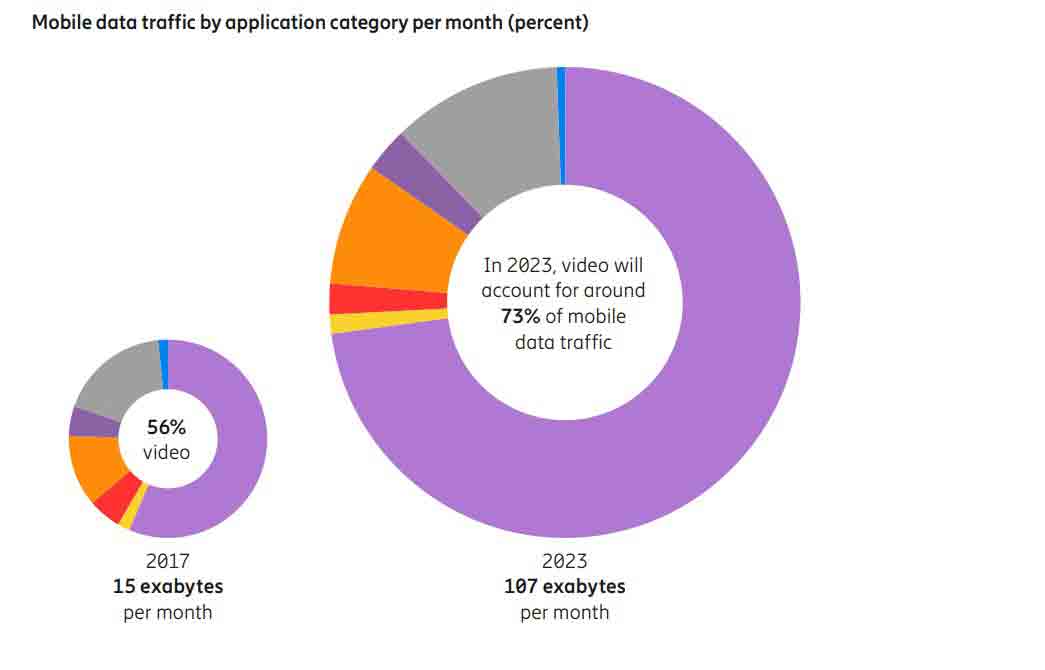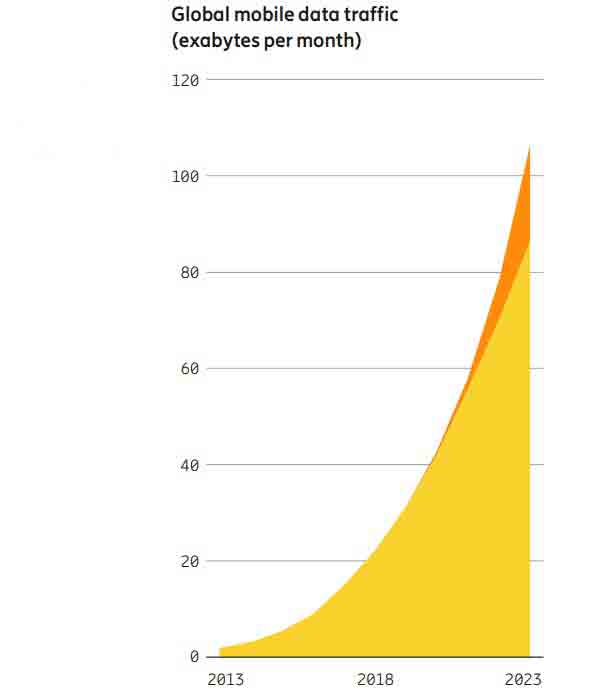Video to Account for 73% Of Mobile Traffic by 2023: Study

WHY THIS MATTERS: Video is going to take up a larger and larger chunk of mobile data traffic.
No matter if it’s delivered on 4G or new, speedier 5G networks, video traffic is going to dominate the mobile world.
That’s according to the latest Ericsson Mobility Report, which regularly takes a six-year view of major trends affecting the sector.
While mobile data traffic grew 54% between Q1 2017 and Q1 2018, mobile video traffic is expected to surge 45% annually through 2023 and account for some 73% of all mobile data traffic.
Traffic generated by social networks is likewise expected to see a 31% uptick over the next six years, though social media’s relative share of traffic will decline from 12% in 2017 to about 8% in 2023, thanks in large part to mobile video’s rising domination, Ericsson said.
Ericsson’s study also focused on the emergence of 5G, the next-generation mobile and wireless standard that will support faster speeds as well as lower latencies for futuristic apps such as self-driving cars.

As 5G deployments start to get off the ground this year, starting in dense, urban areas in support of enhanced wireless broadband services, Ericsson believes that 20% of mobile data traffic will be carried by 5G networks by 2023. That compares to LTE coverage, which is expected to rise from 60% today to 85% to 2023.
Broadcasting & Cable Newsletter
The smarter way to stay on top of broadcasting and cable industry. Sign up below
5G is also expected to drive more traffic per smartphone across regions, with the early use case expected to be fixed wireless access.
By the end of 2017, the average smartphone chewed up 4 Gigabytes per month. That will grow to 25 GB by the end of 2023, Ericsson predicted.
Regardless of network type, worldwide mobile subscriptions are expected to grow from 7.8 billion in 2017 to 8.9 billion in 2023, with smartphone subscriptions rising from 4.3 billion to 7.2 billion during that span.
Ericsson also took a look at how mobile technologies, including 5G, will fuel the Internet of Things market. The study sees cellular IoT connections rising to 3.5 billion in 2023, or at an annual growth rate of 30%.
Ericsson based its forecasts on historical data from multiple sources that is validated using the company’s internal data and “extensive” measurements taken from customer networks.
